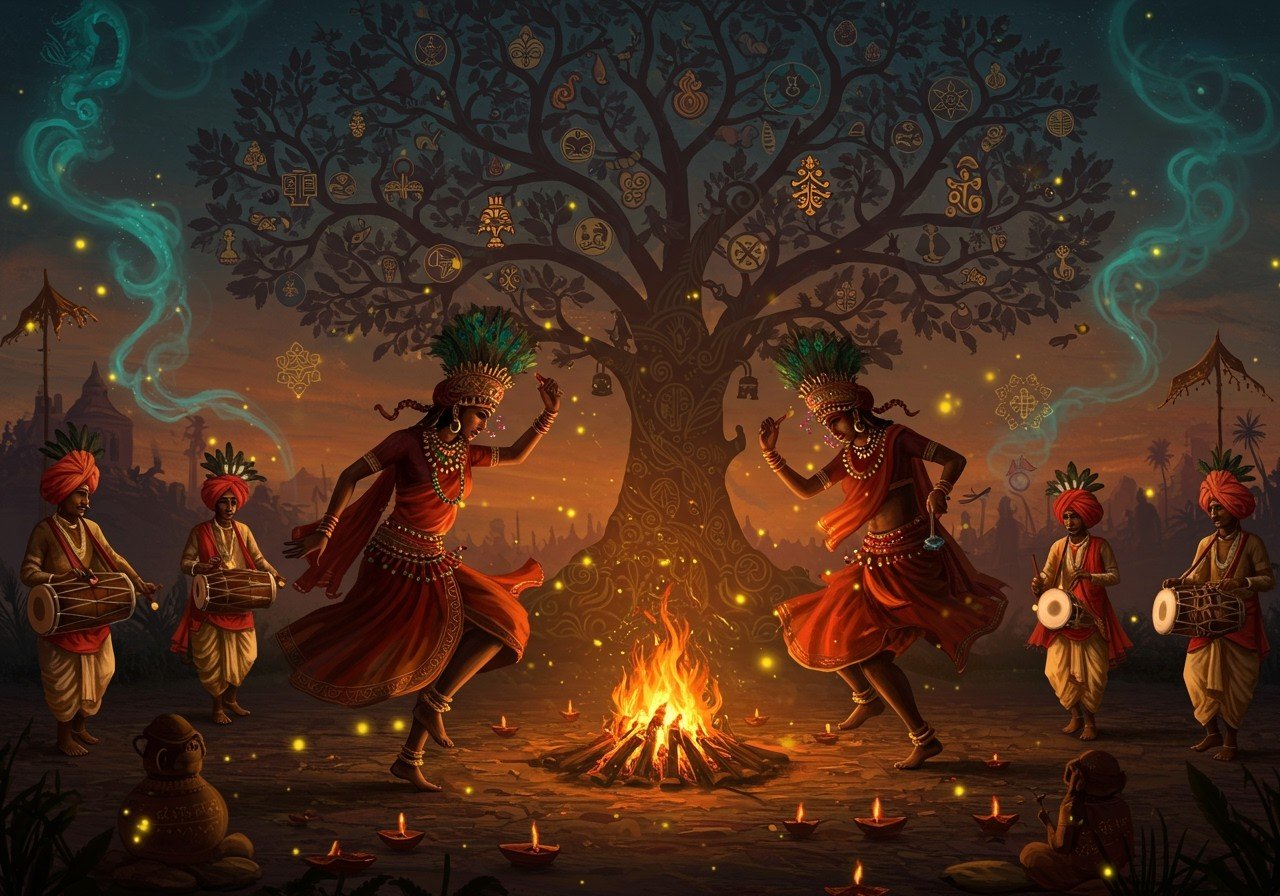Embark on a Spiritual Voyage: Exploring Tribal Music and Dance Traditions

Tribal music and dance are integral to the cultural fabric of numerous societies, deeply interwoven with the customs, beliefs, and social structures of indigenous communities. These traditions, as diverse as the tribes themselves, reflect unique histories, spiritual beliefs, and the natural environments they inhabit. Let’s delve into the captivating world of tribal music and dance, exploring their significance and the role they play in preserving cultural heritage.
Connecting With Your Inner Self: A Hindu Philosophy Guide
Beyond the Temple: India’s Spiritual Heart Revealed
Bhajans and Kirtans: A Deep Dive into Rich Traditions
Tribal Music: A Symphony of Tradition and Spirituality
Tribal music serves a multitude of purposes within indigenous communities. It accompanies religious ceremonies, hunting rituals, healing practices, and celebrations. From lullabies that soothe infants to ceremonial chants that invoke the divine, tribal music expresses a profound connection to the spiritual realm. The music often features a unique blend of vocal styles and rhythmic patterns, creating an atmosphere of reverence and celebration.
- Function and Purpose: Tribal music is not merely entertainment; it plays a vital role in various aspects of community life. It accompanies ceremonies, rituals, healing practices, and social gatherings, reflecting the deep integration of music into the daily lives of tribal communities. Tribal music serves purposes such as storytelling, preserving history, and expressing emotions.
- Elements and Style: The style of tribal music varies significantly across different tribes and regions. Some cultures emphasize vocal music, while others incorporate various instruments. The use of rhythm, melody, and harmony varies widely, creating a rich tapestry of musical expressions. Some musical traditions might feature complex polyrhythms, while others may focus on simple melodic lines.
- Instruments: Tribal music utilizes a wide array of instruments, often crafted from natural materials like wood, bamboo, and animal hide. Drums, rattles, flutes, and stringed instruments create unique soundscapes that resonate with the natural world. The specific instruments used often have symbolic meanings within the culture.
- Interwoven Nature of Sacred and Secular: In many tribal cultures, the distinction between sacred and secular music is blurred. Music is seen as a holistic expression of life, connecting the physical and spiritual realms. This reflects a worldview where music is integral to all aspects of existence.
- Oral Tradition and Transmission: Tribal music is primarily transmitted through oral tradition, passed down through generations by singers and musicians. This ensures the continuity of musical knowledge and cultural heritage. While some music might be learned informally, other forms might involve formal apprenticeships or specific teaching methods.
Tribal Dance: A Vibrant Expression of Culture
Tribal dances are equally significant, performed to mark important events, transmit traditions, celebrate life, and communicate with the spiritual world. These dances, often performed in traditional attire, can range from individual expressions to elaborate group performances that involve the entire community.
- Function and Purpose: Tribal dances hold diverse purposes, from marking life cycle events like births and deaths to celebrating harvests and commemorating historical events. They can also be used for healing, prayer, and maintaining social cohesion within the community. Some dances might enact myths or stories, while others serve as forms of social interaction and courtship.
- Performance and Style: The performance styles of tribal dances are as varied as the cultures themselves. Some dances feature intricate footwork and rhythmic movements, while others emphasize gestures and expressions that convey specific meanings. The use of costumes, masks, and body paint further enhances the visual storytelling of the dance.
- Regional Variations: Tribal dances often exhibit distinct regional variations, reflecting the unique cultural practices and environmental influences of different communities. These variations can include differences in music, costumes, movements, and the overall structure of the dance.
Explore a collection of handcrafted instruments and ritual items at Poojn.in, perfect for enhancing your personal spiritual practices and honoring these rich traditions.
Preserving Cultural Heritage
These music and dance traditions are essential for preserving cultural heritage, expressing identity, and fostering community cohesion. They serve as a powerful reminder of the rich diversity of human cultures and the importance of safeguarding these traditions for future generations.
Experience the spiritual depth of these traditions with authentic puja items from Poojn.in. We offer a curated selection of products to enhance your connection with India’s vibrant cultural heritage.
History and Significance of Saraswati Puja Explained
Holi Puja Guide: Essential Supplies and Rituals
Fabric Coloured Hand Printed Baran Dala Chalon with 4 Small Sora Bowl, 1 Big Sora and Dhakkan and 1 Oil Lamp Pradip Diya


